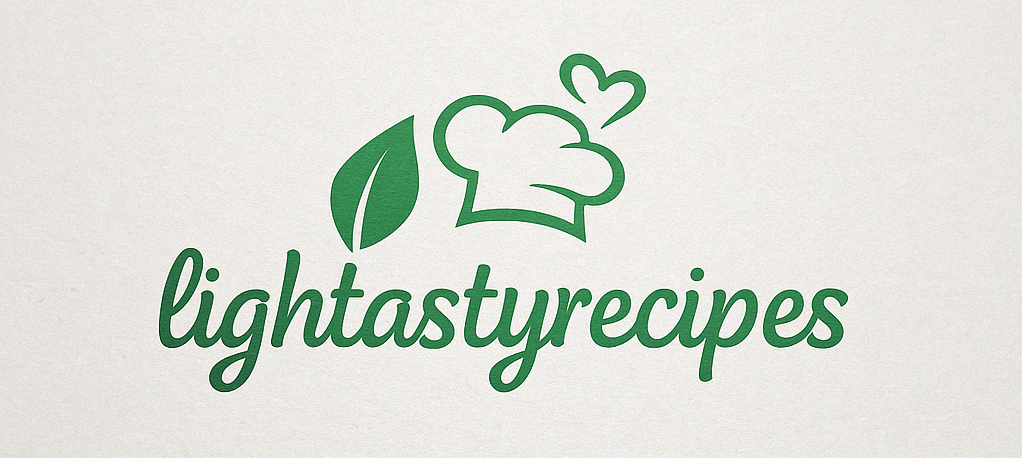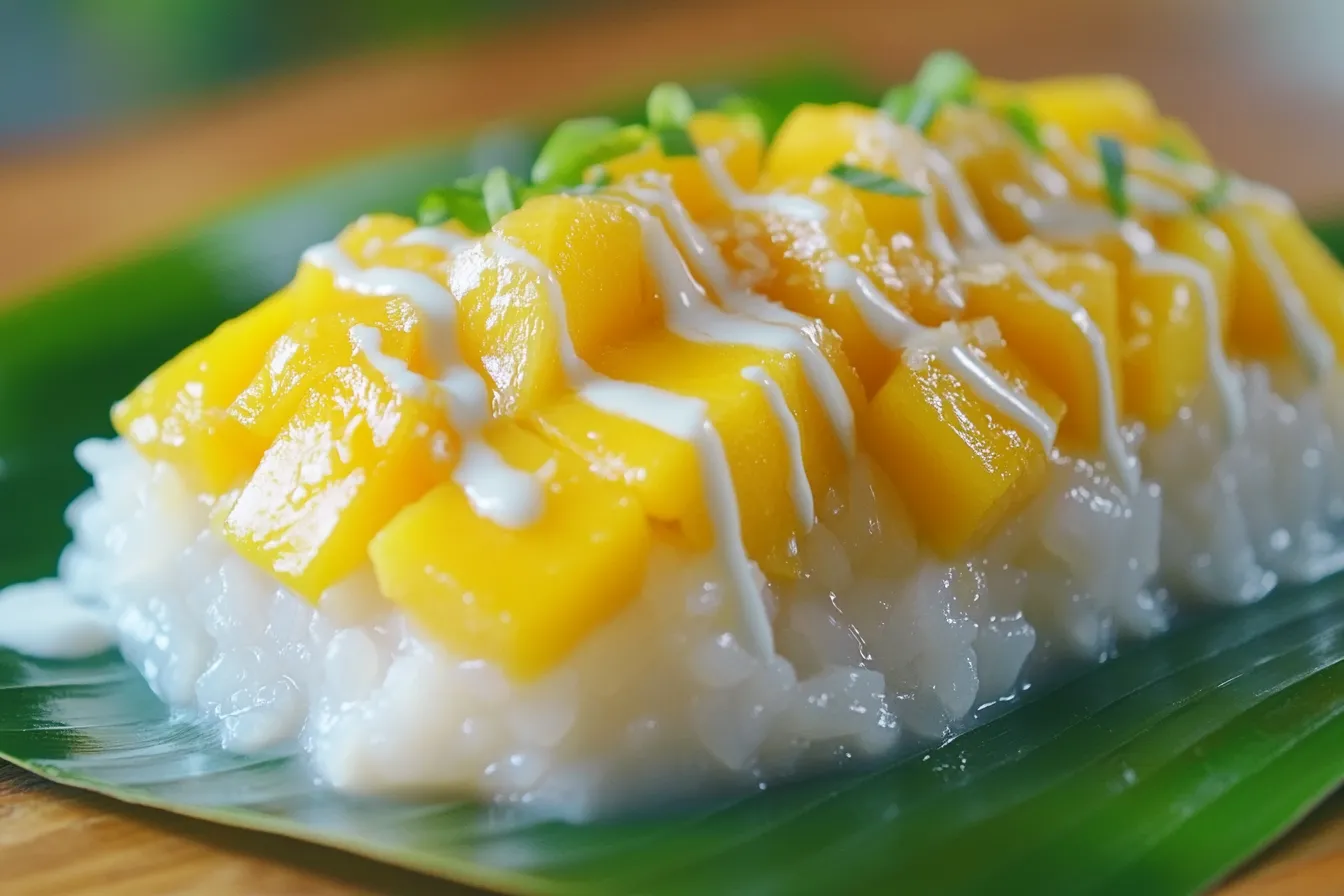If you’ve ever tried Mango Sticky Rice, you already know—it’s not just dessert, it’s an experience. Sweet, creamy coconut milk soaked into soft, chewy rice, paired with juicy slices of ripe mango… yeah, your taste buds are probably dancing just thinking about it.
This classic Thai dessert may seem simple, but don’t let the ingredients fool you—it’s all about technique and balance. Whether you’ve eaten it on the streets of Bangkok or spotted it on Instagram, one thing’s for sure: this dish is loved around the globe.
“It’s like sunshine in a bowl—warm, sweet, and impossible to forget.” ☀️🥭
What Is Mango Sticky Rice?
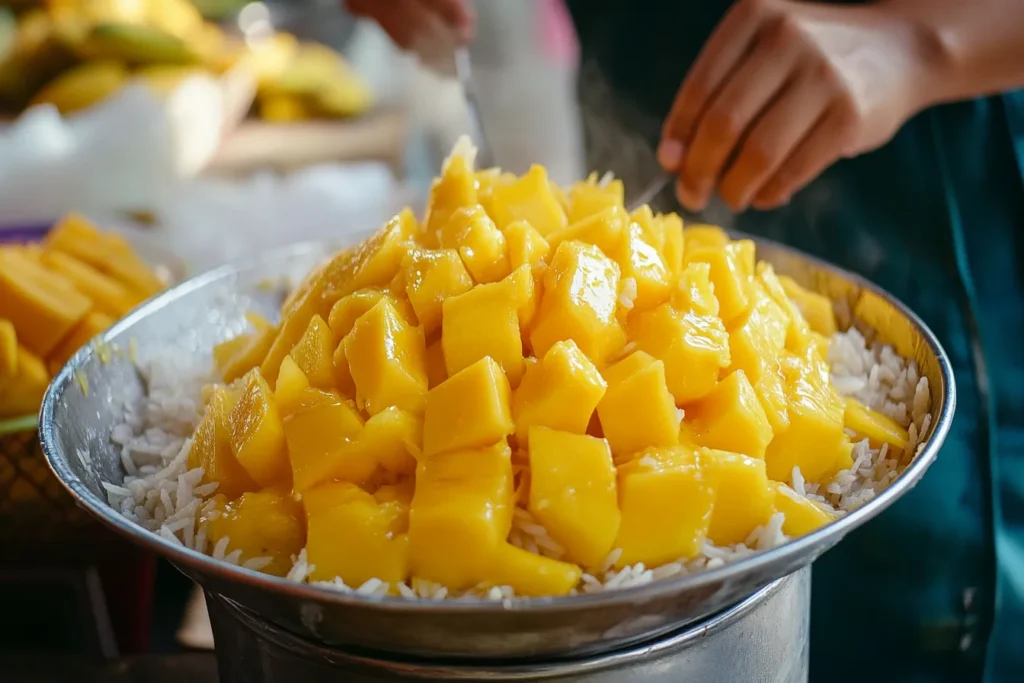
A Classic in Thai Cuisine
Mango Sticky Rice, known locally as khao niew mamuang, is a traditional Thai dessert that combines three basic components: sticky rice (also called glutinous rice), coconut milk, and mango. It’s typically served in the hot season when mangoes are at their juiciest and sweetest.
Unlike Western desserts that rely on chocolate, flour, or eggs, this treat is all about natural, tropical goodness. It’s served slightly warm or at room temperature, making it comforting and refreshing all at once.
Why It’s Loved Around the World
People love Mango Sticky Rice because it hits all the right notes—sweet, creamy, fruity, and just a bit salty. The contrast between the rich coconut sauce and the fresh mango slices is what makes it addictive.
Plus, it’s gluten-free and naturally dairy-free (thanks to coconut milk), so it works for a wide range of diets.
“One bite and you’ll understand why it’s a street food favorite and a restaurant star.” 🌴🍚
Key Ingredients and Their Roles
Glutinous Rice vs Regular Rice
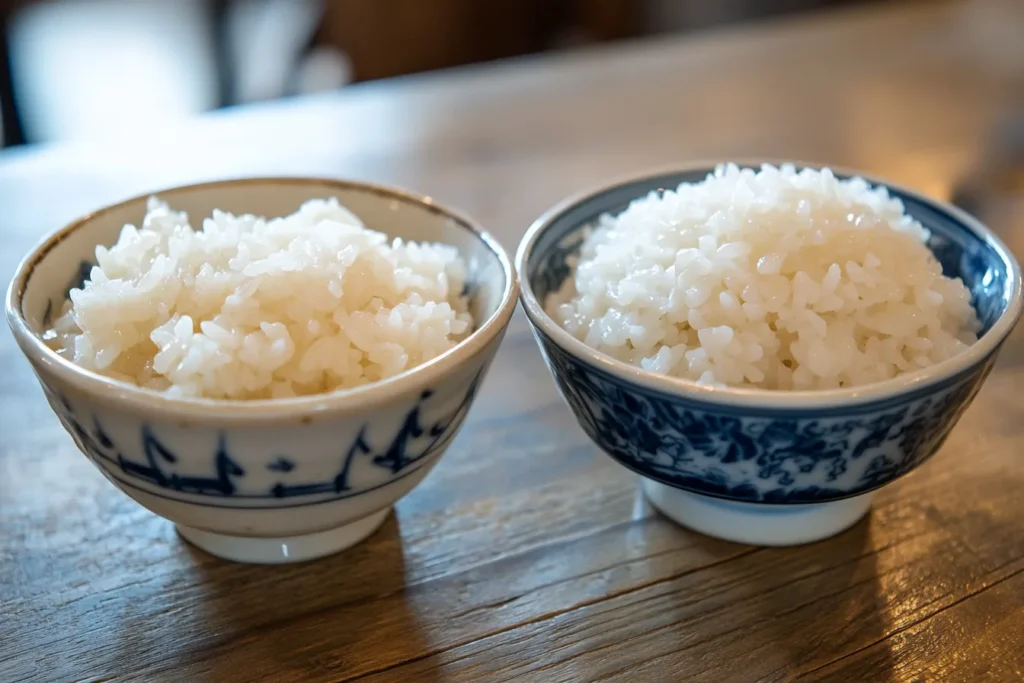
Let’s clear something up—glutinous rice doesn’t actually contain gluten. It’s called that because it gets sticky when cooked. This rice has short, round grains and is sometimes labeled as “sweet rice.”
Using jasmine or long-grain rice won’t give you the same texture. If you want that chewy, sticky base that soaks up the coconut sauce like a sponge, glutinous rice is a must.
Coconut Milk: The Creamy Heart of the Dish
This is where the magic happens. Rich coconut milk is gently simmered with sugar and a pinch of salt to make the sauce. It gets poured over the warm rice and soaks into every grain, turning something plain into something absolutely dreamy.
Mango: Picking the Perfect Variety
Not all mangoes are created equal. For Mango Sticky Rice, go for yellow-fleshed mangoes that are sweet and juicy—like Ataulfo (also called Honey or Champagne mangoes), Nam Dok Mai, or Kent. Avoid fibrous varieties like Tommy Atkins if you want that smooth, melt-in-your-mouth texture.
Ingredient Table (For 4 Servings)

| Ingredient | Quantity |
|---|---|
| Glutinous (sweet) rice | 1 cup (uncooked) |
| Coconut milk (full fat) | 1 1/4 cups |
| Granulated sugar | 1/3 cup |
| Salt | 1/4 tsp |
| Ripe mangoes (medium-sized) | 2, peeled and sliced |
| Toasted sesame seeds or mung beans (optional) | 1 tbsp (for garnish) |
“Six ingredients. That’s it. But when done right, it tastes like a tropical vacation.” 🌺🍽️
Step-by-Step: How to Make Mango Sticky Rice at Home
Now for the fun part—let’s make it! Don’t worry, it’s not hard. You’ll need a bit of patience, but the reward is sweet (literally). Follow these steps and you’ll have that perfect creamy mango sticky rice every time.
Step 1: Soak and Steam the Sticky Rice
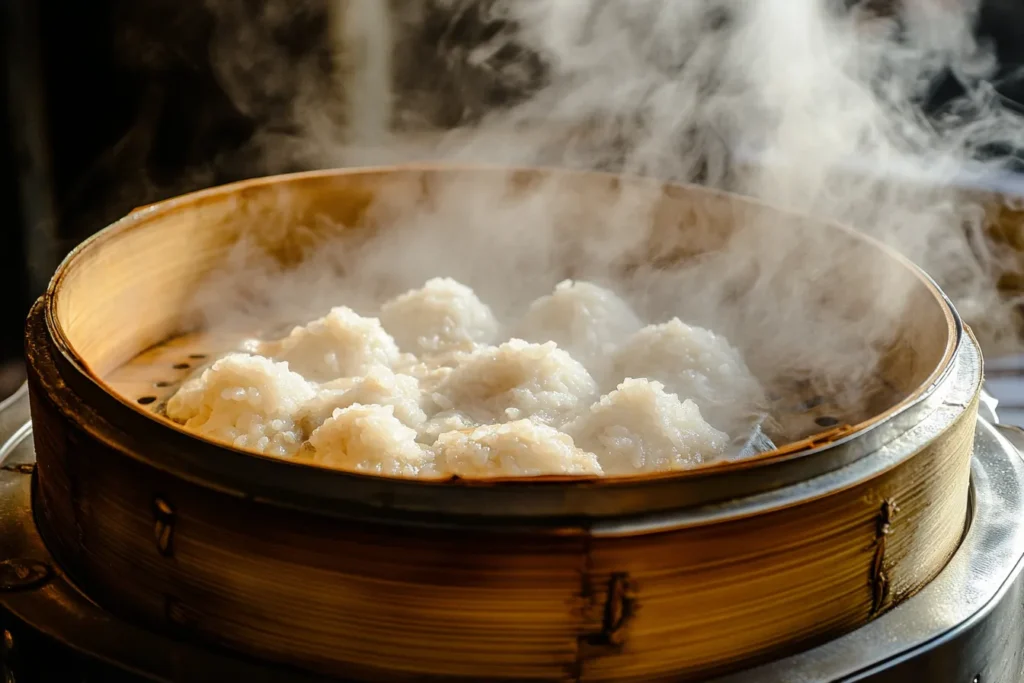
Start by rinsing your glutinous rice a few times until the water runs clear. Then soak it in water for at least 4 hours—or overnight if possible. This softens the grains so they cook evenly.
Drain the rice and steam it over boiling water in a steamer basket lined with cheesecloth or a clean cloth. Cover and steam for 25–30 minutes, flipping halfway through if needed. Don’t boil it—this rice needs steam, not direct water, to get that signature sticky texture.
“Sticky rice doesn’t like shortcuts—soak it well, steam it gently, and let the magic happen.” 🍚✨
Step 2: Make the Coconut Sauce
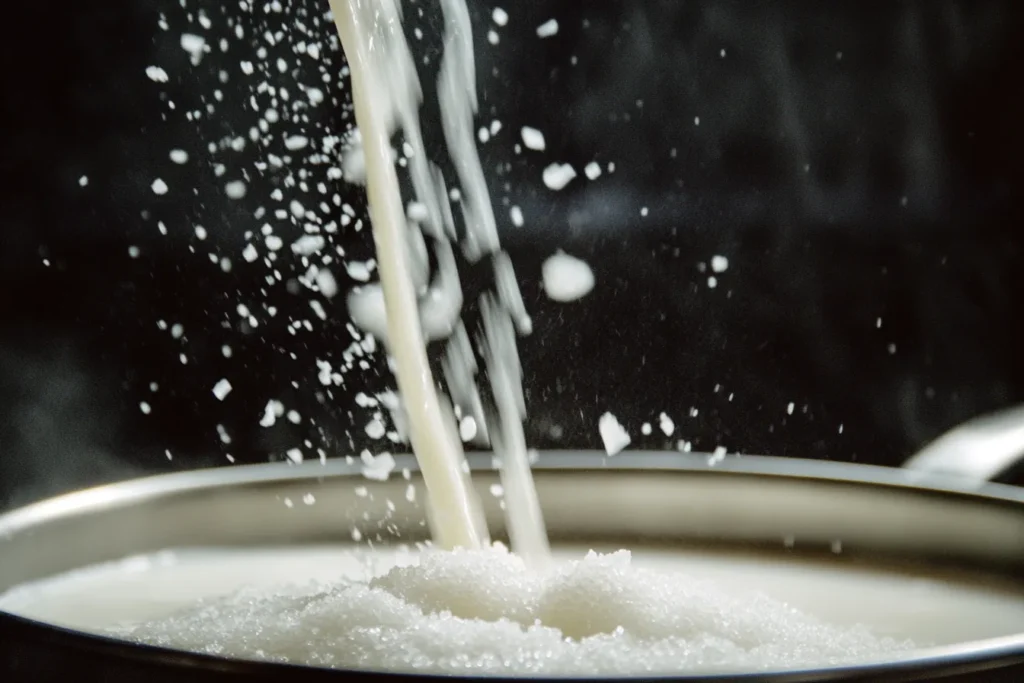
While the rice is steaming, make your sauce. In a small saucepan, combine 1 cup of coconut milk, the sugar, and salt. Stir gently over medium heat until the sugar dissolves—don’t let it boil. Set aside 1/4 cup of this sauce for drizzling later.
Once the rice is done, transfer it to a mixing bowl and immediately pour the rest of the coconut sauce over it. Stir gently, cover, and let it sit for 15–20 minutes. This lets the rice soak up all the creamy flavor.
Step 3: Slice the Mango and Plate Like a Pro

While the rice absorbs the sauce, peel and slice your ripe mangoes. The best cut is the “hedgehog” style: score the flesh into cubes while it’s still in the peel, then flip it inside-out. Looks cool and tastes amazing!
To serve, scoop some warm sticky rice onto a plate, arrange mango slices beside it, and drizzle with the reserved coconut sauce. Sprinkle toasted sesame seeds or mung beans on top if you want some crunch.
“It’s not just a dessert—it’s art on a plate. Creamy, golden, and Instagram-worthy.” 📸🥭
Common Mistakes to Avoid
Using the Wrong Type of Rice
This is probably the biggest mistake. Long-grain or jasmine rice won’t work. Only glutinous rice gives that sticky, chewy, spoon-worthy texture. Look for it in Asian markets or labeled as “sweet rice.”
Overcooking or Undercooking the Rice
If your rice is too hard, it wasn’t soaked long enough. If it’s mushy, you might’ve used too much water or steamed it too long. Always check for a soft but chewy feel—it should hold its shape but stick together.
Separating Coconut Milk or Burning the Sauce
Coconut milk can split if boiled or overheated. Always cook it gently and stir constantly until smooth. If it curdles, the texture will be off (though still edible!).
“Cook low and slow—no one likes burned coconut or soggy rice.” 🥥🚫🔥
Quick Cooking Timeline
| Step | Time Needed |
|---|---|
| Soaking the sticky rice | 4+ hours (or overnight) |
| Steaming the rice | 25–30 minutes |
| Cooking the coconut sauce | 5–7 minutes |
| Resting the rice with coconut sauce | 15–20 minutes |
| Slicing mango and plating | 5 minutes |
| Total time (excluding soaking) | 45–60 minutes |
“With a little prep and patience, you’ll turn simple ingredients into something unforgettable.” 🌾❤️
Creative Variations Around the World
Love the original but want to mix things up? Mango Sticky Rice is already amazing, but there are fun ways to give it a twist. Here are some creative ideas from kitchens around the world:
Black Sticky Rice with Mango
Swap out regular glutinous rice with black glutinous rice (also called forbidden rice). It gives a nutty taste, chewy texture, and a dramatic purple color that pops against golden mango slices.
Mango Sticky Rice Popsicles or Sushi Rolls
Yep, people are making popsicles out of it! Just blend sticky rice with coconut milk, layer it with mango puree, and freeze. Or try sushi-style rolls with sweet rice and mango wrapped in banana leaves or rice paper.
Vegan & Dairy-Free Versions
Good news—Mango Sticky Rice is naturally vegan as long as you don’t top it with dairy cream. Stick to full-fat coconut milk and skip any dairy toppings. You won’t miss a thing!
“Think outside the bowl—sticky rice can go from street snack to fancy fusion in seconds.” 🍽️💡
Nutrition Facts Per Serving (Based on 4 Servings)
| Nutrient | Amount |
|---|---|
| Calories | 330 kcal |
| Total Fat | 11g |
| Saturated Fat | 9g |
| Carbohydrates | 55g |
| Sugar | 20g (mostly natural) |
| Protein | 3g |
| Fiber | 2g |
| Sodium | 70mg |
“It’s sweet, but not too sweet—natural fruit, coconut cream, and rice make this dessert both comforting and satisfying.” 🥥📊
Make-Ahead and Storage Tips

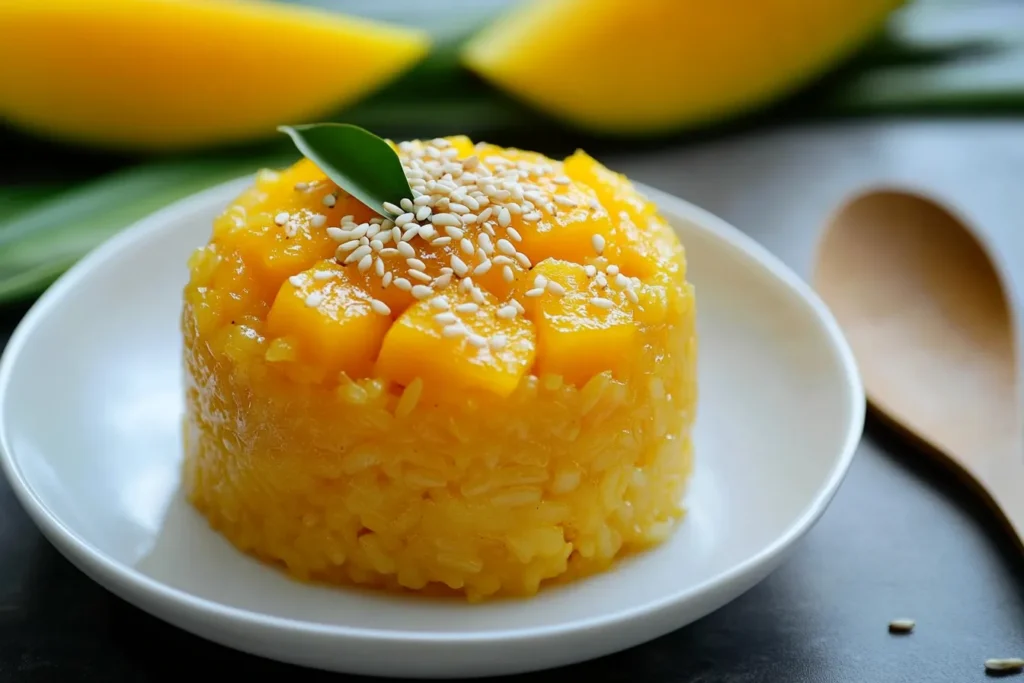
How Long It Lasts in the Fridge
If you have leftovers (which is rare!), store the sticky rice and mango separately. The rice will keep for up to 2 days in an airtight container in the fridge. Just gently reheat it with a splash of coconut milk.
Can You Freeze Mango Sticky Rice?
Technically yes, but it’s not ideal. Freezing can dry out the rice and change the texture. If you must freeze, store the rice and coconut sauce separately, and skip freezing the mango.
“This dish is best enjoyed fresh—but leftovers make a great breakfast or afternoon treat.” 🌅🍚
Frequently Asked Questions (FAQs)
Can I Use Canned Mango?
You can, but fresh is always better. Canned mango is usually packed in syrup and can taste too sweet or mushy. Use fresh, ripe mangoes for the best texture and flavor.
Is This Dish Gluten-Free?
Yes! Despite the name “glutinous,” the rice used contains zero gluten. Just make sure any flavorings or toppings are also gluten-free.
Why Is My Rice Too Dry or Too Wet?
If your rice is too dry, it may not have steamed long enough or soaked enough coconut milk. Too wet? You may have added too much liquid or didn’t let it rest after adding the sauce. Timing is everything!
“Getting the texture right is all about balance—moist but not soggy, sticky but not mushy.” 🔁🍚
Final Thoughts: A Comforting Sweet Treat with Tropical Charm
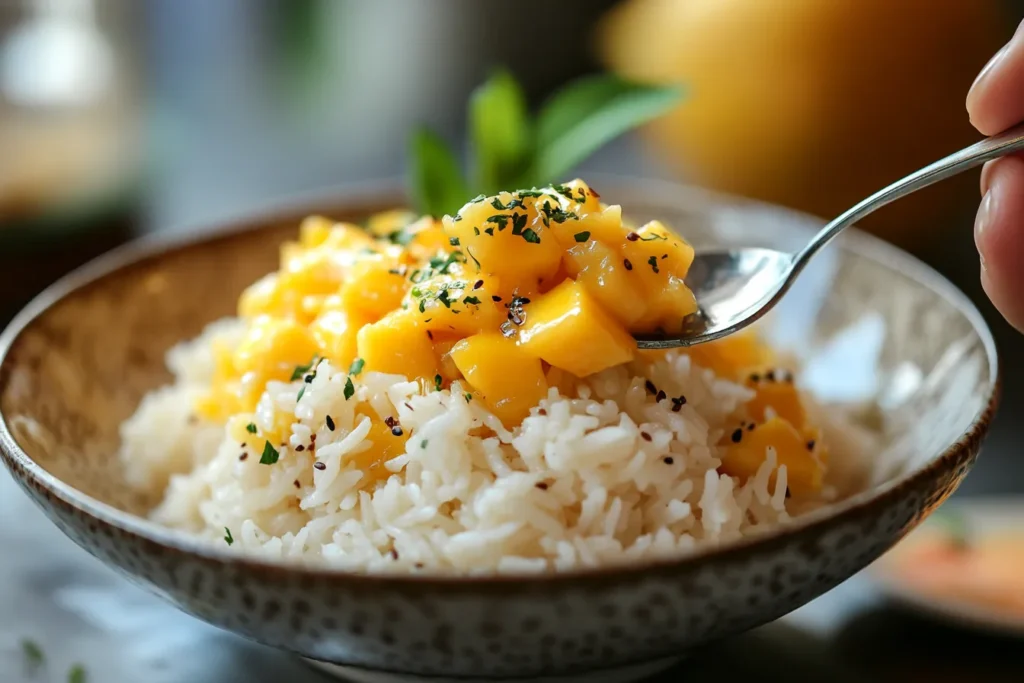
Mango Sticky Rice is proof that simple ingredients can make unforgettable dishes. It’s creamy, fruity, sweet (but not too sweet), and comforting in a way only homemade desserts can be. Whether you’re enjoying it as a street snack in Thailand or making it for a friend at home, this dish always feels special.
Don’t be afraid to make it your own. Add toppings, change the mango variety, or plate it differently. But whatever you do, take that first bite slowly—and let the tropical flavor do its thing. 🌴🍴
“One bite, and you’re somewhere warm, sweet, and sunny—no passport needed.” ☀️🥭🍚
